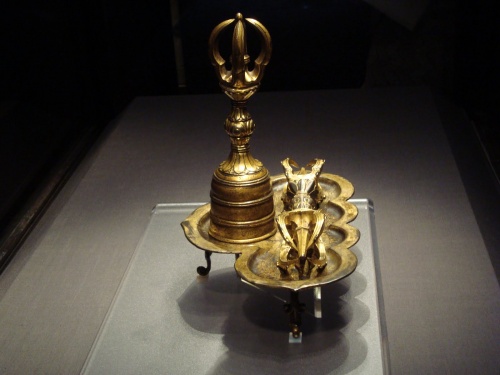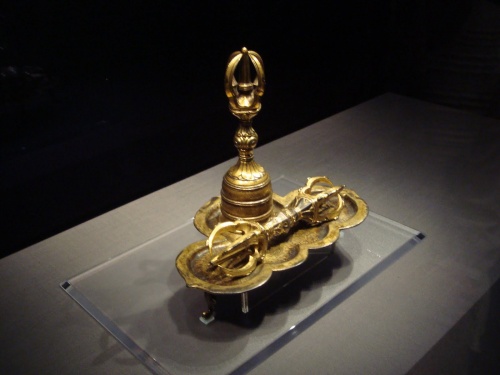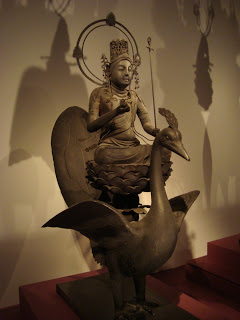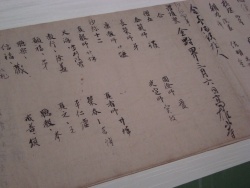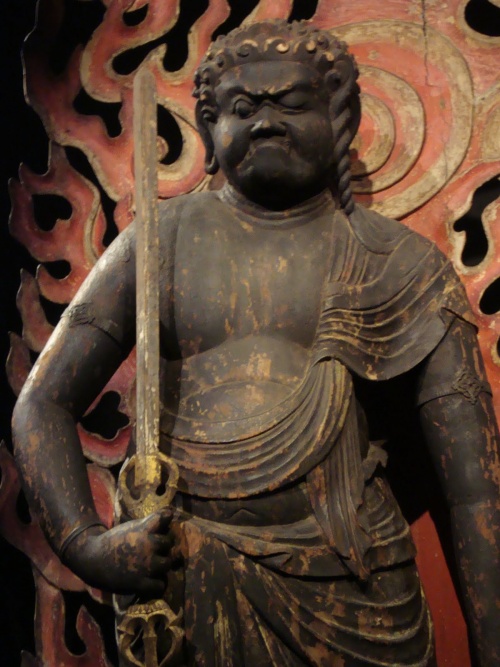Kūkai's Vajra and Bell
Kūkai's Vajra and Bell
By Indrajala (Jeffrey Kotyk)
Today I had the good fortune to be able to see the original vajra and bell bestowed unto Kūkai 空海 (774–835) by his teacher Huiguo 惠果 (746–805) in the early 9th century in China. The Tokyo National Museum is presently running an exhibition of esoteric Buddhist art and artifacts until September 25th, 2011.
The craftsmanship of the artifacts is indeed superb, but moreover the history of these items summons visions of an enlightened master in Tang China passing them to a humble disciple. The reality of course is that this really happened. Huiguo gave these items to Kūkai, who brought them back to Japan and his lineage has taken good care of them ever since. These are classified as a national treasure in Japan. It is also interesting that they are still used on special occasions.
The exhibition also contained the following intriguing sculpture which was originally made in China and brought back to Japan in 847 by E'un 惠運 (798-869), a disciple of one of Kūkai's chief disciples. It is Ākāśagarbha Bodhisattva 虛空藏菩薩, or more specifically the Lotus Ākāśagarbha Bodhisattva.
It is in quite good condition considering its age. Japan is blessed with many aged old wooden sculptures that have been well preserved over the centuries. This particular piece was imported from China in the late Tang Dynasty. Interestingly, E'un brought this over in 847, just two years after the great persecution of 845, which saw a sweeping state ordered destruction of Buddhist institutions across the empire. I have to wonder if this sculpture was made before or after the persecution. If it was before, then it fortunately survived the chaos.
The exhibit also included a few genuine examples of Kūkai's own handwriting. Again, we are quite fortunate that such items were so well preserved over time. There are a number of extant documents personally penned by Kūkai, which enables scholars to study his calligraphy style. We also have some of his notebooks, which include notes in the margins and blotted out patches where he made an error.
I greatly appreciate these kinds of exhibitions. I have always enjoyed history and when it comes to Buddhist artifacts I relish them all the more. Buddhism has always valued its own history and whether it be Buddha relics or a lineage founder's personal possessions the tradition has been to preserve items of the past so that future generations can venerate them while cultivating both emotional and spiritual ties to one's lineage.
